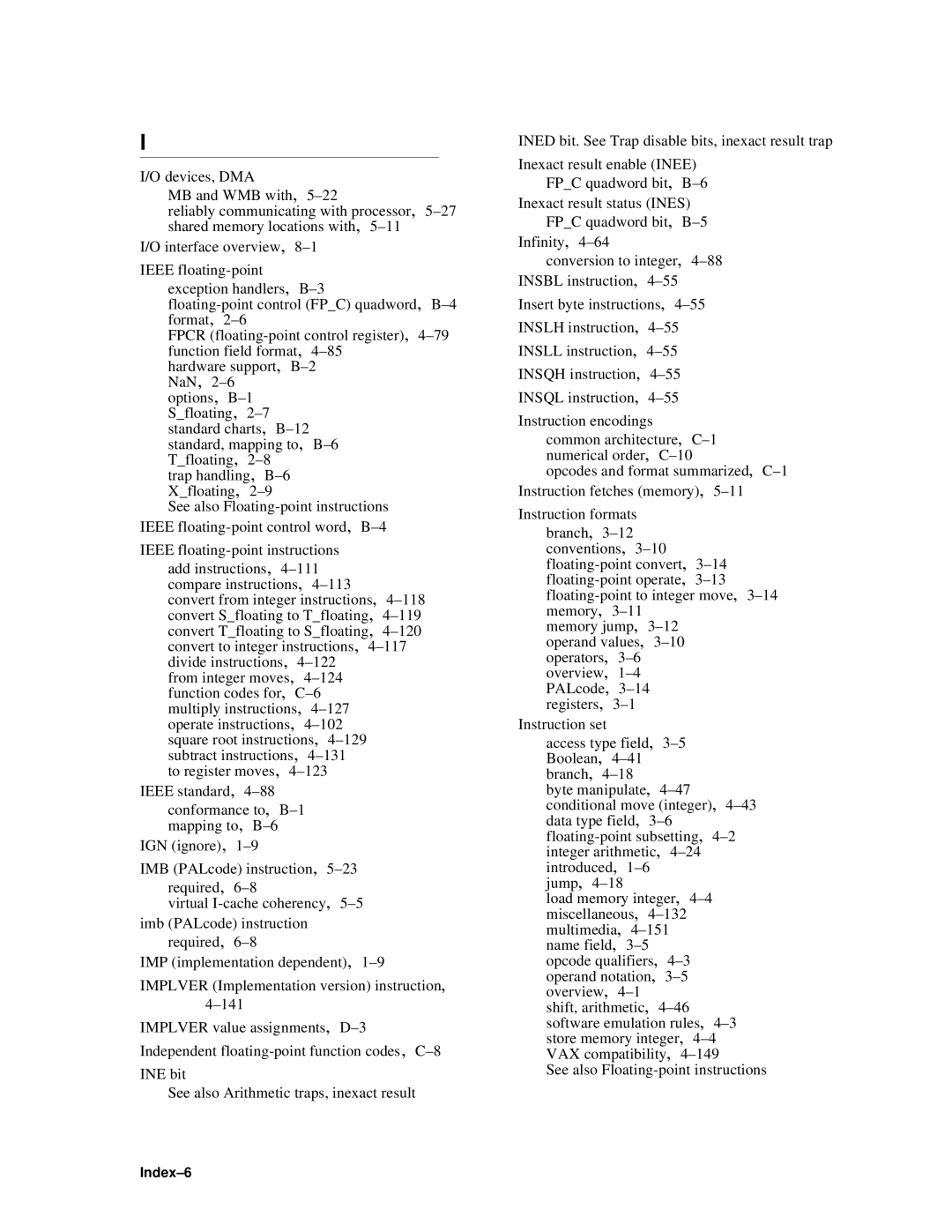I
I/O devices, DMA
MB and WMB with,
reliably communicating with processor,
I/O interface overview,
IEEE
exception handlers,
FPCR
hardware support,
options,
S_floating,
trap handling,
See also
IEEE
add instructions,
convert from integer instructions,
from integer moves,
IEEE standard,
conformance to,
IGN (ignore),
IMB (PALcode) instruction,
required,
virtual
required,
IMP (implementation dependent),
IMPLVER (Implementation version) instruction,
IMPLVER value assignments,
Independent
INE bit
See also Arithmetic traps, inexact result
INED bit. See Trap disable bits, inexact result trap
Inexact result enable (INEE) FP_C quadword bit,
Inexact result status (INES) FP_C quadword bit,
Infinity,
conversion to integer,
Insert byte instructions,
INSLH instruction,
INSLL instruction,
INSQH instruction,
INSQL instruction,
Instruction encodings
common architecture,
opcodes and format summarized,
Instruction formats
branch,
memory jump,
Instruction set
access type field,
byte manipulate,
jump,
load memory integer,
shift, arithmetic,
See also
